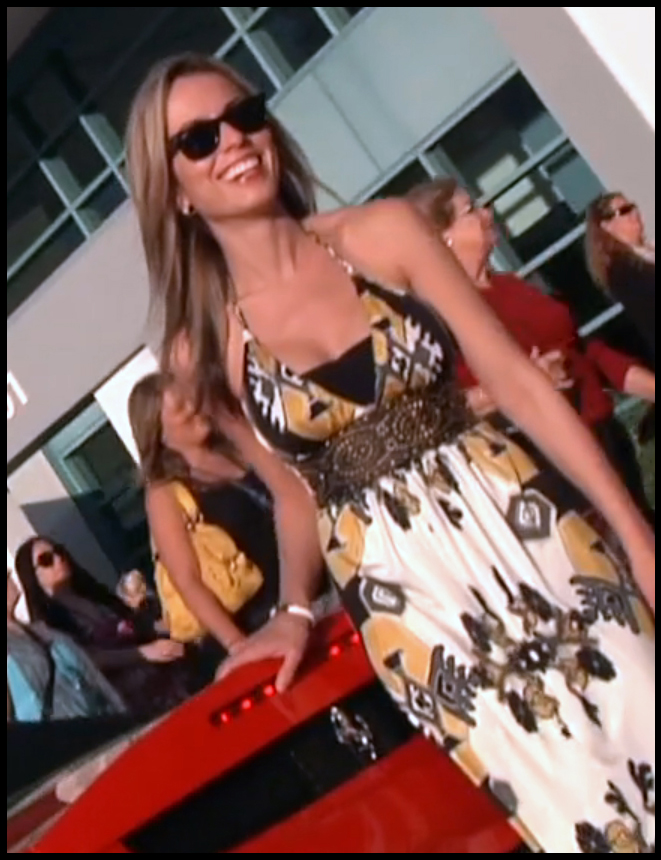Click Here to watch Video! Jaclyn Santos at Art Basel MIAMI 2010 for ArtScout TV from ArtScoutTV.com on Vimeo.
It was wonderful to return to Miami for Art Basel week. I grew up in Miami and began visiting Art Basel Miami Beach since its launch in 2002, and each year only gets better. This year, ArtScout TV joined me as I toured the Convention Center and viewed artwork by some of the most relevant Modern and Contemporary artists. I enjoyed running into friends, meeting fans, and conversing with art dealers as I navigated through the fair.
I immediately noticed the powerful black and white photographs by artist Helmut Newton. Newton’s iconic images of actresses, models, and socialites are at once confrontational and seductive; distant yet available. The women seem completely in control of their sexuality. While the women appear dignified, their beauty conforms to a hyper-sexualized ideal.
Marina Abramović’ work questions that ideal. Her series of still images from the performance, Art Must Be Beautiful, Artist Must Be Beautiful depict the artist aggressively brushing her hair as if it’s an important mission. Abramović said in an interview that during the 1970s, “if the woman artist would apply make-up or put [on] nail polish, she would not have been considered serious enough.” Through this performance, Marina comments on “the commodification of art and artist by critiquing conventions of and demands for female beauty in art and contemporary culture.” Click here to view a video of this performance from her recent MOMA retrospective, The Artist Is Present.
The pill paintings by Damien Hirst were recently on view at his latest exhibit, “Poisons + Remedies,” at Gagosian gallery in London. The pills are made of resin and plaster, and the stains on the white canvas are meticulously painted with watercolor to create a realistic staining effect, a technique similar to the one Jeff Koons uses to re-create expressionistic gestures. The multi-colored pills seem more like a rainbow of jellybeans than medicine, which enhances the deceptive nature of pharmaceuticals: they can kill as easily as they cure.
I developed a strong interest in Anish Kapoor’s work when I experienced his site-specific sculpture, Memory, last year at the Guggenheim . Here’s a description of the project:
“The sculpture appears to defy gravity as it gently glances up against the peripheries of the gallery walls and ceiling, and down again to the floor. Its inaccessibility forces viewers to negotiate the work at a remove and to contemplate its ensuing fragmentation by attempting to piece together the images retained in their memories. As such, they are required to exert more effort in the act of seeing. Kapoor describes this process as creating ‘mental sculpture’ Participants… become hyperconscious of their own positions in space.” (see full article here.)
Like the two pieces seen in the video, Kapoor’s work is often elegant yet mysterious; it entices the viewer in then compels him to move about the space to fully experience it.
Thank you for joining me and ArtScout TV!



Leave a Comment